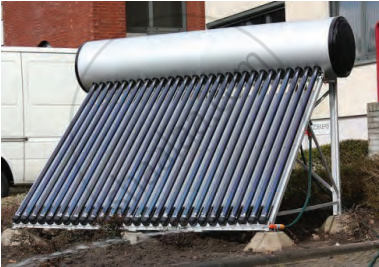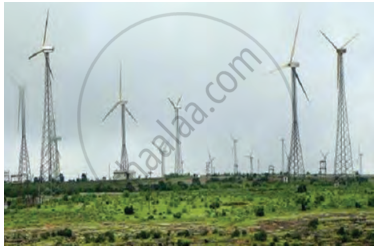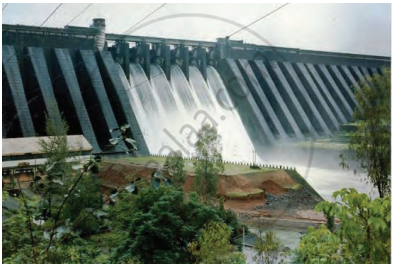Topics
Natural Resources – Air, Water and Land
- Natural Resources
- Atmosphere and Its Layers
- Air Around Us
- Composition and Components of Air
- Importance of Air
- Air Pollution and Its Causes
- Water: Our Lifeline
- Availability of Water
- Composition of Water
- Importance of Water
- Scarcity of Water
- Land
- Soil Formation
- The Importance of Conserving Earth’s Natural Resources
The Living World
Diversity in Living Things and Their Classification
Disaster Management
Substances in the Surroundings –Their States and Properties
Substances in Daily Use
Nutrition and Diet
- Nutrients and Nutrition
- Component of Food
- Carbohydrates
- Diseases Due to Deficiency of Carbohydrates
- Fats (Lipids)
- Diseases Due to Deficiency of Fats
- Proteins
- Diseases Due to Deficiency of Proteins
- Vitamin and Minerals
- Diseases Due to Deficiency of Vitamin
- Diseases Due to Deficiency of Minerals
- Fibre
- Diseases Due to Deficiency of Fibre
- Water
- Diseases Due to Deficiency of Water
- A Balanced Diet
- Nourishment and Malnutrition
- Food Adulteration
Our Skeletal System and the Skin
Motion and Types of Motion
Force and Types of Force
Work and Energy
- Force, displacement and work
- Energy
- The relationship between work and energy
- Forms of Energy
- Mechanical Energy
- Heat Energy (Thermal Energy)
- Light Energy
- Sound energy
- Chemical Energy
- Transformation of Energy
- Energy Resources
- Conventional energy resources or non-renewable energy resources
- Non-conventional energy resources or renewable energy resources
- Energy saving and green energy
Simple Machines
Sound
Light and the Formation of Shadows
Fun with Magnets
The Universe
- Introduction
- Solar energy
- Wind energy
- Tidal energy
- Hydroelectric or hydel power
- Energy obtained from oceanic
- Atomic energy
Introduction:
Non-conventional energy resources are renewable energy resources that are not traditionally used but are inexhaustible and can be continuously reused. They are alternatives to conventional energy sources like coal, petrol, and diesel, which are limited and could run out due to growing energy needs.
Types of Non-Conventional Energy Resources:
- Solar Energy
- Wind Energy
- Tidal Energy
- Hydroelectric (Hydel) Power
- Energy from Oceanic Waves
- Atomic energy
Solar Energy:
The energy obtained from the sun is continuous and enormous. Solar energy is at the root of all energy available on the earth.
- A variety of devices have been developed to make use of solar energy. For example, solar cookers, solar water heaters, solar dryers, solar cells, etc.
- In the first three devices mentioned above, heat energy obtained from the sun is utilised to cook food, heat water, and dry grain.
- In a solar cell, electrical energy can be obtained from solar energy.
- Solar electric plants have the capacity to produce electricity on a large scale. A solar plant consists of many solar cells.

Solar Energy
Wind Energy:
Wind energy comes from the movement of air (wind). It is used to produce electricity by using wind turbines or windmills.
- The wind is created when air moves from one place to another. This happens because the sun heats different parts of the earth unevenly.
- Wind turbines are tall machines with large blades. When the wind blows, it makes these blades spin.
- The spinning blades turn a part inside the turbine, which is connected to a machine called a generator. This generator turns the wind's energy into electricity.
- The electricity made by the turbine can be sent to homes, schools, and businesses to power lights, appliances, and other machines.

Wind energy
Tidal Energy:
The gravitational pull of the moon and sun causes the rise and fall of ocean tides, which generate tidal energy.
- A tidal power plant usually requires building a wall or dam (called a tidal barrage) in a narrow part of a river, creek, or estuary. This wall helps control the flow of water when the tide rises and falls.
- As tides rise and fall, the water flows in and out, creating strong currents or waves.
- These moving water currents push through turbines placed in the dam.
- The turbines spin, and this spinning motion is converted into electricity by generators.
Hydroelectric (Hydel) Power:
Hydroelectric power is the process of using the energy of moving or falling water to generate electricity. It is a renewable and environment friendly energy source.
- Water is stored in a large dam built at a high level, usually in a river or reservoir.
- When electricity is needed, the water is released from the dam and flows downward through tunnels due to gravity.
- As the water flows through these tunnels, it moves with strong force, causing turbines (large blades) to spin.
- The spinning turbines are connected to a generator, which converts the mechanical energy (the spinning) into electrical energy.
- The electricity generated is then sent through power lines to be used in homes, industries, and other places.
The place where electricity is generated in this way is called a ‘hydroelectric or hydel power’ plant. The Koyna project in Maharashtra is a well-known hydel project.

Hydel power
Energy from Oceanic Waves:
While sea waves seem to move forward, the water moves up and down regularly. Special machines, called wave energy converters, are placed in the ocean. These machines use the up-and-down movement of water to generate energy.
- The machines capture the motion of the waves and turn it into mechanical energy (movement energy).
- The mechanical energy turns a turbine, which works like a big fan. When the turbine spins, it creates electricity.
- Wave energy is a renewable source, meaning it will never run out and will not pollute the environment.
- Since ocean waves are constant, they can provide energy throughout the year, making them reliable.
Atomic energy:
Atomic energy is the energy that we get from atoms, which are tiny building blocks of everything around us. In atomic energy plants, the atoms of heavy elements like uranium and thorium are split apart in a process called fission. This releases a lot of heat.
- The heat produced during fission is used to boil water and turn it into steam.
- The steam moves large machines called turbines, which spin and create electricity, just like wind turns a windmill.
- Atomic energy can help produce a large amount of electricity, especially when other sources like coal or water are not enough.
- A small amount of uranium or thorium can produce a huge amount of energy, making it very efficient.
- While atomic energy is powerful, nuclear power plants are built with strict safety measures to avoid accidents.
